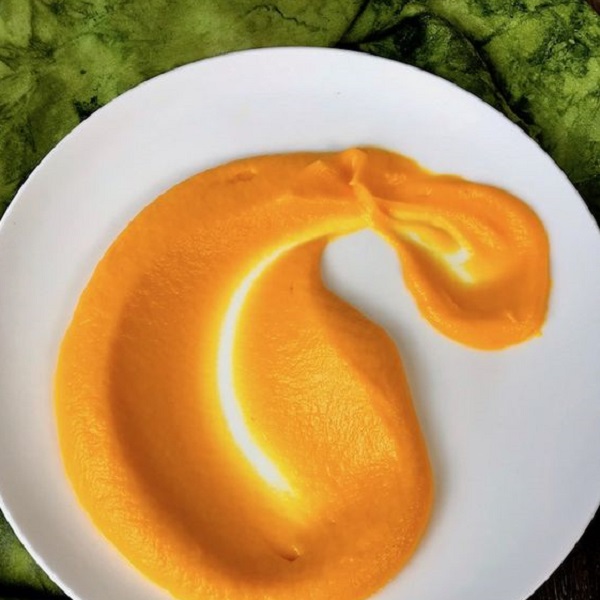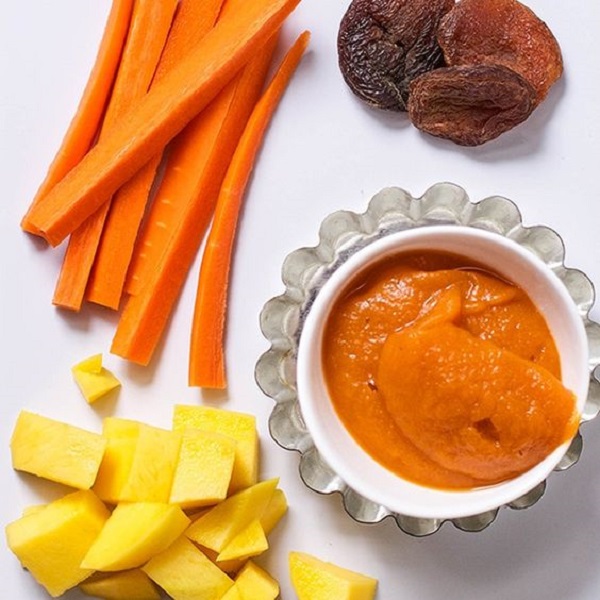Vegetable puree, often associated with the early stages of infant feeding, is a culinary technique with a far broader scope than you might imagine. In its essence, it involves transforming vegetables into a smooth and creamy texture, unlocking a world of flavors and culinary possibilities. Let’s delve into the world of vegetable puree, exploring its versatility, nutritional value, and various applications that extend beyond baby food.
The Basics: What Exactly is Vegetable Puree?
Vegetable puree, in its simplest form, is cooked vegetables that have been blended or mashed into a smooth, creamy consistency.
Cooking Methods
Vegetables can be cooked in various ways before pureeing, including steaming, boiling, roasting, or even grilling. The chosen cooking method can impact the final flavor and texture of the puree.
Blending or Mashing
Once cooked, the vegetables are blended or mashed until they reach a smooth and creamy texture. The desired consistency can vary depending on the intended use.
Flavor Enhancements
While some vegetables can shine on their own in a puree, others benefit from additional flavor enhancements. You can add a touch of butter, olive oil, herbs, spices, or even a splash of cream or broth to create a more complex and satisfying flavor profile.
Nutritional Powerhouse: Unveiling the Benefits
Vegetable purees offer a convenient and delicious way to incorporate a variety of vegetables into your diet, reaping their nutritional benefits.
-
Vitamins and Minerals: Vegetables are rich in essential vitamins and minerals, including vitamins A, C, and K, as well as potassium and folate. Pureeing vegetables helps retain these nutrients, providing a nourishing and wholesome addition to your meals.
-
Fiber: Even in pureed form, vegetables retain their fiber content, which aids digestion, promotes gut health, and contributes to feelings of fullness and satiety.
-
Antioxidants: Many vegetables are packed with antioxidants that help protect your cells from damage caused by free radicals. Pureeing vegetables can make them more accessible and enjoyable for those who struggle with chewing or digestion.
-
Low in Calories and Fat: Vegetable purees are generally low in calories and fat, making them a healthy and guilt-free addition to your diet.

Beyond Baby Food: Culinary Versatility
While vegetable purees are synonymous with baby food, their culinary applications extend far beyond infant feeding.
-
Soups and Stews: Vegetable purees can add thickness, creaminess, and depth of flavor to soups and stews. They can also be used as a base for creamy vegetable soups.
-
Sauces and Dips: Blend vegetable purees with herbs, spices, and other ingredients to create flavorful sauces or dips for vegetables, chips, or crackers.
-
Pasta Dishes: Incorporate vegetable purees into pasta sauces for a creamy and nutritious twist.
-
Smoothies and Drinks: Add a spoonful of vegetable puree to your smoothies or juices for a boost of vitamins, minerals, and fiber.
-
Baked Goods: Use vegetable purees like pumpkin or sweet potato puree in muffins, breads, or cakes for added moisture, flavor, and nutritional value.
Creative Culinary Applications
- Hidden Veggies: Sneak extra vegetables into your family’s diet by adding purees to sauces, soups, or baked goods.
- Vibrant Colors: Utilize colorful vegetable purees like beet or carrot puree to add a pop of color and visual appeal to your dishes.
- Flavor Experimentation: Don’t be afraid to experiment with different combinations and flavors. Blend multiple vegetables together or add herbs and spices to create unique and exciting purees.
Homemade vs. Store-Bought: A Matter of Convenience and Control
While store-bought vegetable purees offer convenience, making your own at home allows for greater control over ingredients and freshness.
-
Homemade Purees:
- Freshness and Flavor: Homemade purees are made from fresh ingredients, ensuring optimal flavor and nutritional value.
- Customization: You can tailor the flavors and textures to your preferences, experimenting with different combinations and spices.
- Cost-Effective: Making your own purees can be more cost-effective in the long run compared to buying pre-made ones.
-
Store-Bought Purees:
- Convenience: Pre-made purees offer a quick and easy option, especially for busy individuals or those new to cooking.
- Variety: Store-bought purees often come in a variety of flavors and combinations, offering convenience and options for picky eaters.
- Check Labels: When choosing store-bought purees, carefully read the ingredient list and look for options with minimal additives or preservatives.

Tips for Making Perfect Vegetable Purees
Whether you’re making baby food or experimenting with culinary creations, these tips will help you achieve smooth and flavorful vegetable purees.
-
Choose Fresh, Ripe Vegetables: Select fresh, ripe vegetables at their peak flavor for optimal results.
-
Proper Cooking: Cook the vegetables until they’re tender and easily mashed or blended. Steaming or roasting can help retain more nutrients and flavor compared to boiling.
-
Blending or Mashing: Use a blender, food processor, or immersion blender to achieve a smooth and creamy consistency. For a chunkier texture, you can use a potato masher or fork.
-
Add Liquid: If the puree is too thick, add a small amount of liquid like water, broth, or milk to achieve your desired consistency.
-
Seasoning: Enhance the flavor with a pinch of salt, pepper, or your favorite herbs and spices.
-
Storage: Store leftover puree in an airtight container in the refrigerator for up to 3-4 days or freeze it for longer storage.
Beyond the Expected: Creative Uses for Vegetable Puree
Vegetable puree’s versatility extends beyond soups and baby food. Explore these creative applications to add a healthy and flavorful twist to your dishes.
-
Smoothie Booster: Add a spoonful of spinach or kale puree to your morning smoothie for a nutrient-rich and vibrant green boost.
-
Hidden Veggie Pasta Sauce: Sneak in extra vegetables by blending cooked carrots, zucchini, or spinach into your tomato sauce.
-
Vibrant Hummus: Blend roasted beets or sweet potatoes into your hummus for a colorful and flavorful twist.
-
Cake and Muffin Enhancer: Add moisture, flavor, and nutrients to your baked goods by incorporating vegetable purees like pumpkin or zucchini into the batter.
-
Natural Food Coloring: Use vibrant vegetable purees like beet or spinach puree to naturally color frostings, icings, or even pasta dough.

Mastering the Art of Pureeing: Tips and Techniques
Creating the perfect vegetable puree involves a few simple yet crucial steps. Let’s explore some tips and techniques to ensure a smooth and flavorful result.
-
Vegetable Selection: Choose fresh, ripe vegetables that are free from blemishes or bruises. The quality of your ingredients directly impacts the final flavor and texture of your puree.
-
Washing and Preparation: Thoroughly wash and peel (if necessary) your chosen vegetables before cooking. Remove any seeds, stems, or other undesirable parts.
-
Blending or Mashing: Once cooked, blend or mash the vegetables until smooth. You can use a blender, food processor, immersion blender, or even a potato masher, depending on your desired consistency.
-
Seasoning and Flavor Enhancements: Elevate the flavor of your puree with a pinch of salt, pepper, or your favorite herbs and spices. You can also add a touch of butter, olive oil, or a splash of cream or broth for richness and depth.
Conclusion
Vegetable puree is a culinary gem that offers a world of possibilities beyond its traditional role in baby food. Its versatility, nutritional value, and ability to enhance both sweet and savory dishes make it a valuable tool for creating healthy and flavorful meals.
Whether you’re a parent feeding your little one, a health-conscious individual seeking to boost your vegetable intake, or a culinary enthusiast looking to experiment with new flavors and textures, vegetable puree is a delicious and adaptable ingredient that deserves a place in your kitchen.
So, go ahead, embrace the power of purees, and let your creativity flow in the kitchen!
